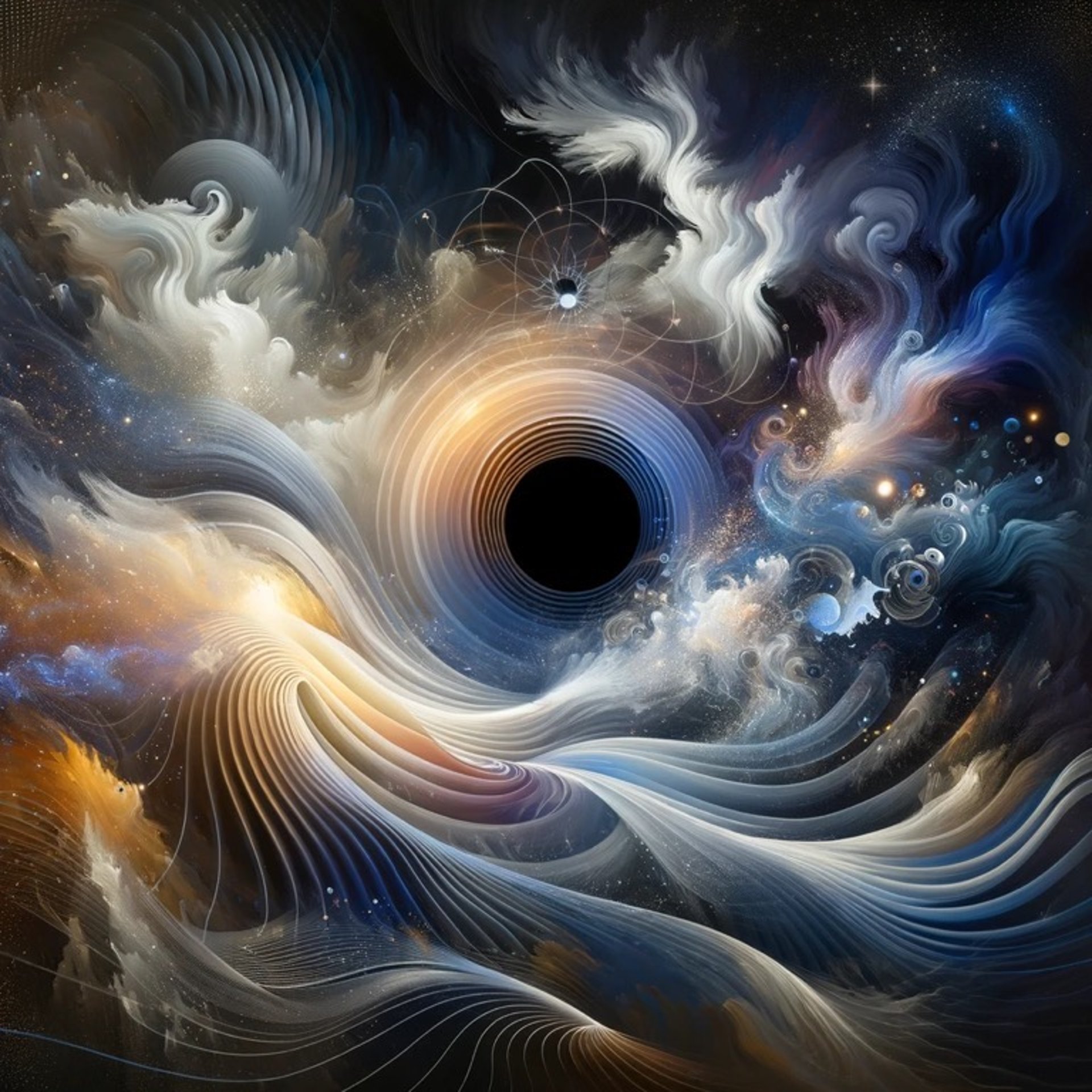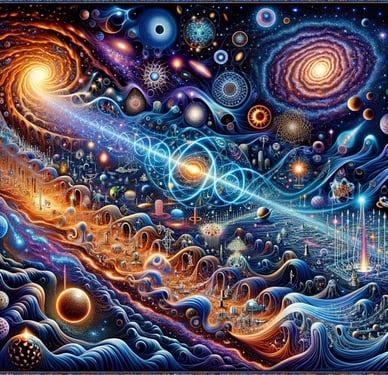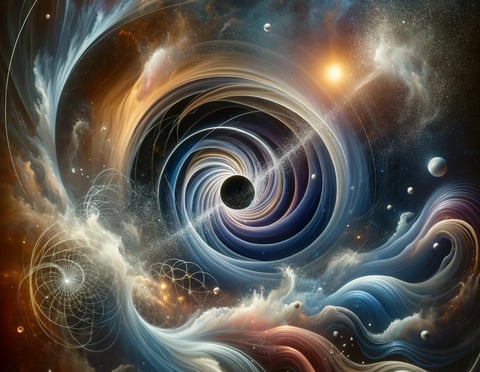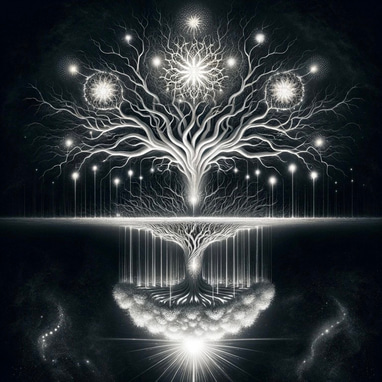
Viśvam and the Tapestry of Quantum and Chaos Theories: From Singularity to Cosmic Symphony
This article delves into the conceptual parallels between the ancient Vedantic notion of ‘Viśvam’—the all-encompassing reality—and modern scientific theories such as Quantum Mechanics, Chaos Theory, and the concept of singularity in black holes. It illustrates how ‘Viśvam’ encapsulates a universe of probabilities and interconnected complexities, mirroring the probabilistic nature of quantum particles and the ordered unpredictability described by Chaos Theory. Furthermore, it discusses how both Vedantic philosophy and the physics of singularity explore the emergence and convergence of the cosmos from and into a singular state, offering a unified perspective on the nature of existence that harmonizes spiritual insights with scientific understanding.
PHILOSOPHY
2/2/20242 min read
Viśvam and the Tapestry of Quantum and Chaos Theories: From Singularity to Cosmic Symphony
The Vedantic concept of ‘Viśvam’ presents a holistic view of the cosmos, intricately linked with the principles of Quantum Theory and Chaos Theory, framing a narrative that extends from the singularity to the vast orchestration of the universe. This article explores the symbiotic relationship between the ancient wisdom of ‘Viśvam’ and the cutting-edge theories of modern physics.
Quantum Theory, which deals with the fundamental behavior of matter and energy on the atomic and subatomic levels, introduces a paradigm where particles exist in states of probability rather than definitive reality until measured or observed (Dirac, 1958). This echoes the Vedantic view encapsulated by ‘Viśvam’, where the material universe is seen as a manifestation of the underlying Brahman, which is the ultimate reality that transcends the perceivable world.
‘Viśvam’ aligns with the probabilistic nature of quantum mechanics, suggesting that the universe in its entirety is a play of consciousness, with potentialities manifesting as the reality we experience. This resonates with the quantum concept that reality is not fixed but is a spectrum of possibilities that materialize upon interaction with consciousness (Bohr, 1934).
Chaos Theory, which examines complex systems and the unpredictable behaviors that arise from deterministic laws, can also be integrated with the ‘Viśvam’ concept. Chaos Theory posits that within the apparent randomness, there is an underlying order—a notion that is also reflected in ‘Viśvam’, where the cosmic order is maintained amidst the seemingly chaotic cycles of creation and dissolution (Lorenz, 1963).
Singularity, in the context of black holes, is a point where conventional laws of physics break down. In the Vedantic context, ‘Viśvam’ can be seen as the singularity from which all manifestations of the universe emerge and into which they ultimately converge (Penrose, 1965). This singularity is not just a physical point but a state of oneness that underlies the apparent diversity of the universe, akin to the non-dual nature of Brahman.
The integration of ‘Viśvam’ with Quantum Theory and Chaos Theory, while acknowledging the depth of singularity, presents a compelling view of the cosmos. It is a view that combines the unpredictability and potentiality of quantum mechanics, the intricate order within chaos, and the singularity from which all complexity is born. Together, these concepts suggest a universe that is both an orchestrated expression of fundamental laws and an emanation from a singular source, which is unfathomable and yet intimately connected with everything that exists.
In conclusion, ‘Viśvam’, Quantum Theory, Chaos Theory, and the concept of singularity together paint a picture of a universe that is complex, interconnected, and dynamic. They provide a framework for understanding the cosmos that is as much spiritual in essence as it is scientific in explanation, leading to a holistic understanding of the nature of existence.
References:
• Dirac, P. A. M. (1958). The Principles of Quantum Mechanics.
• Bohr, N. (1934). Atomic Theory and the Description of Nature.
• Lorenz, E. N. (1963). Deterministic Nonperiodic Flow.
• Penrose, R. (1965). Gravitational Collapse and Space-Time Singularities.


My post content






